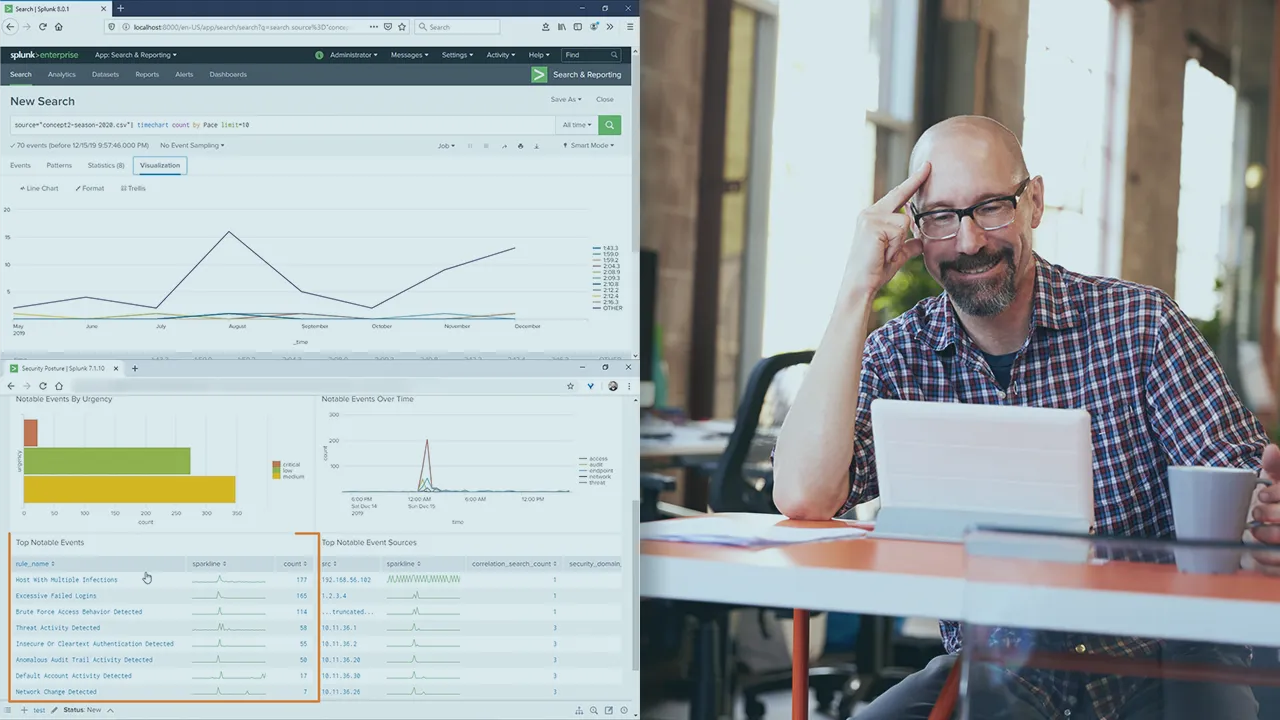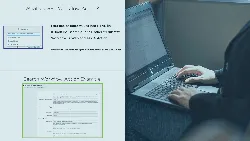
Correlating Events with Transactions in Splunk 
This course will teach you how to use Splunk to group and correlate events, generate reports and dashboards, extract fields, and compare different approaches to transactions. With plenty of examples, you'll be able to master the fundamentals of Splunk transactions. ▼
ADVERTISEMENT
Course Feature
![]() Cost:
Cost:
Free Trial
![]() Provider:
Provider:
Pluralsight
![]() Certificate:
Certificate:
Paid Certification
![]() Language:
Language:
English
![]() Start Date:
Start Date:
On-Demand
Course Overview
❗The content presented here is sourced directly from Pluralsight platform. For comprehensive course details, including enrollment information, simply click on the 'Go to class' link on our website.
Updated in [February 21st, 2023]
What does this course tell?
(Please note that the following overview content is from the original platform)
You will master how to correlate and group events in Splunk using transactions. Through many examples, you will learn how to generate reports and dashboards, extract fields, and compare alternative approaches to transactions.
Correlating events in Splunk is an essential skill every Splunk user must have. Unfortunately, identifying and employing the right SPL commands with appropriate options can be very difficult. In this course, Correlating Events with Transactions in Splunk, you will gain a foundational knowledge of Correlating techniques in Splunk using transactions. First, you will learn the transaction command and all its useful options. Next, you will discover the all-powerful rex command to extract fields and use them in transactions. Then, you will explore how to generate reports and dashboards using transaction results. Finally, you will also gain an understanding of alternative commands such as stats and join, and when to use them. When you’re finished with this course, you will have the skills and knowledge of correlating and grouping events needed to effectively make sense of your machine data.
We consider the value of this course from multiple aspects, and finally summarize it for you from three aspects: personal skills, career development, and further study:
(Kindly be aware that our content is optimized by AI tools while also undergoing moderation carefully from our editorial staff.)
What skills and knowledge will you acquire during this course?
The Skills and Knowledge Acquired in Correlating Events with Transactions in Splunk Course
This course will provide learners with a comprehensive understanding of correlating events in Splunk using transactions. Learners will gain knowledge of the transaction command and its options, the rex command to extract fields, and how to generate reports and dashboards. Additionally, learners will gain an understanding of alternative commands such as stats and join, and when to use them. With this knowledge, learners will be able to effectively make sense of their machine data and become a Splunk power user.
How does this course contribute to professional growth?
This course provides a comprehensive understanding of correlating events in Splunk using transactions, which can be beneficial for professional growth. It teaches the transaction command and its options, the rex command to extract fields, and how to generate reports and dashboards. Additionally, it covers alternative commands such as stats and join, and when to use them. With this knowledge, professionals can effectively make sense of their machine data and become a Splunk power user. This can help them to become more efficient and productive in their work.
Is this course suitable for preparing further education?
This course provides a comprehensive understanding of correlating events in Splunk using transactions, which can be beneficial for preparing further education. It covers topics such as the transaction command and its options, the rex command to extract fields, and how to generate reports and dashboards. Additionally, it provides an understanding of alternative commands such as stats and join, and when to use them. This knowledge can be useful for furthering one's education in the field of Splunk.
Course Provider

Provider Pluralsight's Stats at AZClass
Pluralsight ranked 16th on the Best Medium Workplaces List.
Pluralsight ranked 20th on the Forbes Cloud 100 list of the top 100 private cloud companies in the world.
Pluralsight Ranked on the Best Workplaces for Women List for the second consecutive year.
AZ Class hope that this free trial Pluralsight course can help your Splunk skills no matter in career or in further education. Even if you are only slightly interested, you can take Correlating Events with Transactions in Splunk course with confidence!
Discussion and Reviews
0.0 (Based on 0 reviews)
Explore Similar Online Courses

C++ 17: Beyond the Basics

Designing Event-driven Applications Using Apache Kafka Ecosystem

Python for Informatics: Exploring Information

Social Network Analysis

Introduction to Systematic Review and Meta-Analysis

The Analytics Edge

DCO042 - Python For Informatics

Causal Diagrams: Draw Your Assumptions Before Your Conclusions

Whole genome sequencing of bacterial genomes - tools and applications

Introduction to Splunk

Splunk: The Big Picture


Start your review of Correlating Events with Transactions in Splunk